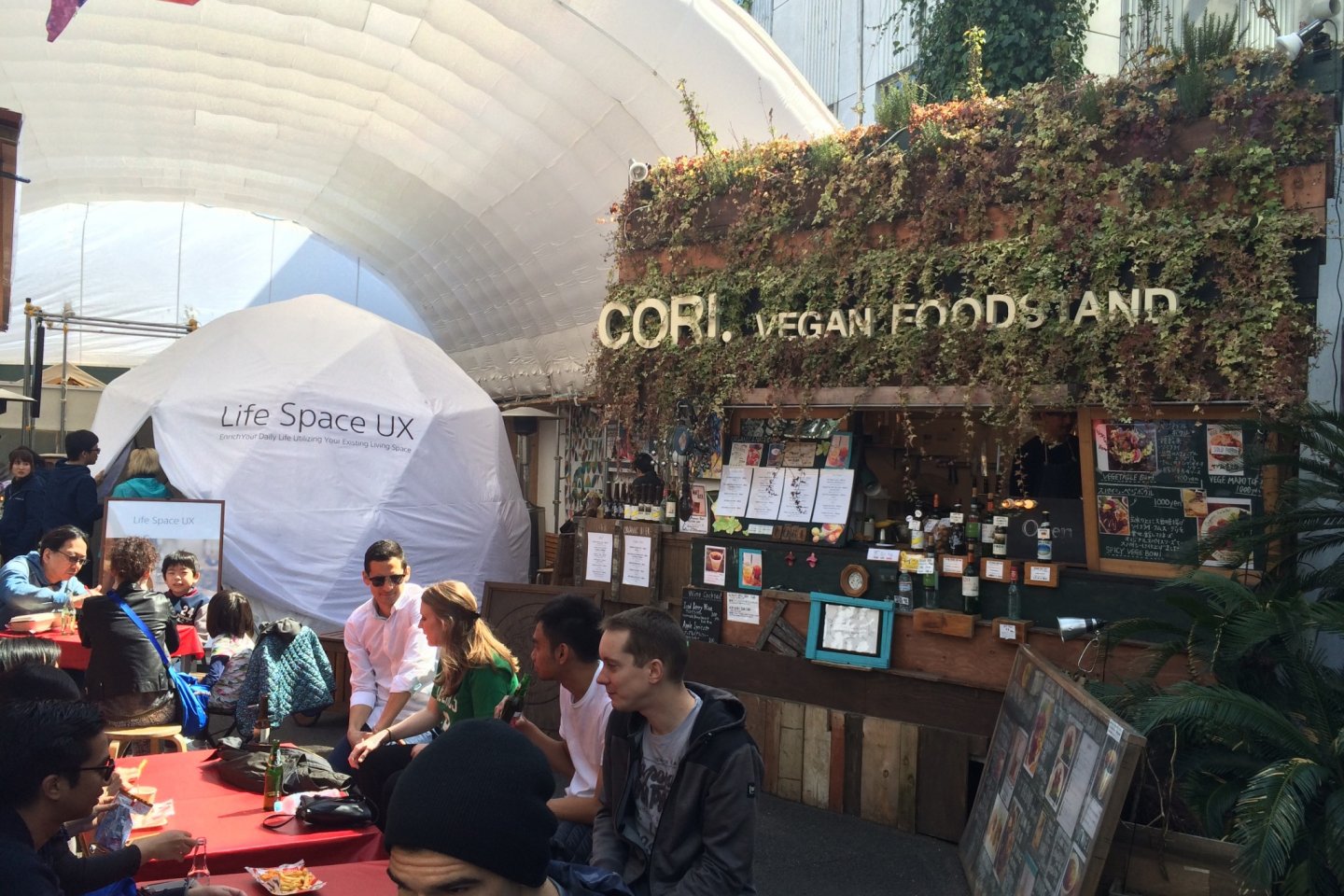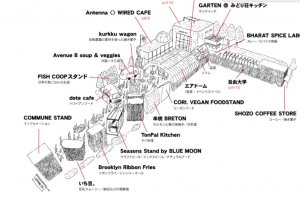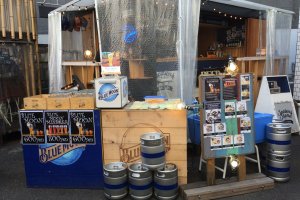Commune 246. Those words don't mean much to the average tourist. Despite obscurity, it’s a spot that embodies yet another side of Tokyo’s excessive charm and ever-shifting food culture.
Would it help to boil the concept down to food carts? Because while that's part of the community space, the image you're now picturing is likely wrong. Let’s start from the beginning, shall we?
In August 2014, creators behind Commune 246 launched an open-air community space in the heart of Tokyo centered around promoting experimentation, study, architecture, and design. Commune 246 is a branch of the “Freedom University,” an organization advocating new forms of learning.
It’s tucked away in the bustling Omotesando area but lies just out of sight in a near-by alley in Minami-Aoyama. Blink, and you might miss it. But isn’t that the lesson Japan often leaves us with? If you aren't paying attention to life’s little details, you just might miss it all.
So, what exactly is it? The experience, like so many interfaces of this generation, deeply depends on the user. Here are the numerous faces of Commune 246 that attract businesspeople, tourists, foodies, and artists alike.
- A workspace: It offers an open-air space with free seating to conduct meetings or simply to do work in a setting outside a coffeeshop or the office.
- A community space: A lot of places in Japan feel closed off and exclusive, but the commune is designed to offer a friendly, community atmosphere.
- Lunch/dinner spot: The spot has more than 15 restaurants and cafes, offering vegan and vegetarian options, along with booze, Thai food, German food and more. (I personally recommend the “Picnic Sandwich” from “Garten.”) Patrons can order food and sit anywhere within the grounds -- at a picnic table, under the dome or at the one indoor cafe.
- Coffee break: The spot has plenty of shops for coffee, including Shozo Coffee Store.
- Wi-Fi respite; Remedy the problem of a city rich with technology yet somehow devoid of easily accessible Wi-Fi, and plug in at the Atenna Wired Cafe.
- Concert venue/event space: The open dome space leaves room for a stage to house artists, concerts, and other pop-up events. In the past they’ve hosted events from the likes of Sony to LGBT groups to up-and-coming artists.
- Living space Believe it or not, you can even rent a custom-crafted retro trailer right in the center of it all. While the “Caravan Tokyo” might sound a bit strange at first, that’s what the space is about — experimentation. The spot is listed on Airbnb and goes for about ¥17,000 a night. One of the reviews called it “well equipped, cosy, and comfortable.”
- Vegan/Vegetarian friendly: Among the food fare is options for vegans and vegetarians. Start with “CORI” a vegan food stand that aspires to change the image of bland vegan food and instead present “juicy” dishes for their patrons.
- Tourist destination: The commune probably isn’t on a lot of tourists’ radars — but the area encompasses part of the Tokyo experience. The design alone showcases the value of the Japanese aesthetic and artistry that utilizes every chance to stimulate the imagination.
- Art: Simply, the space is a work of art. Each stand and open space shows off craftsmanship with unlikely materials, like bamboo or hanging vines, matched with vintage lighting and signs. A spot you can revel -- not just sit in.
Prices are decent but expect lunch for two to be at least ¥2,500.




































